Right of Reply: The truth about the People of Keppapilavu in Mullaitivu
Posted on January 8th, 2013
Shenali Waduge
This response is to counter the article titled ƒÆ’‚¢ƒ¢-¡‚¬ƒ…-In search of justice: The story of the people of KepapilavuƒÆ’‚¢ƒ¢-¡‚¬ƒ”š‚ written under a pseudonym ƒÆ’‚¢ƒ¢-¡‚¬ƒ…-ElijahƒÆ’‚¢ƒ¢-¡‚¬ƒ”š‚ to the Sunday Times (6 Jan 2013) having visited Mullaitivu as well as spoken to the people of Kepapilavu last month (Dec 2012).
Can someone please say how worse can life be for people who were living for 30 years in cadjan huts under LTTE rule engulfed in immeasurable number of fears , now given 40 perches of land for each family, 6 months of dry rations, 12 roofing sheets per family, 8 cement bags, non-food relief items that include mosquito nets, plastic mats, kitchen setsƒÆ’‚¢ƒ¢-¡‚¬ƒ”š‚¦.even coconut scrappers and a total shelter grant of Rs25,000 and eventually a brick house that is 550sq.ft with 2 bedrooms/a living room/bathroom and kitchen?
Can Elijah no one demanded LTTE to leave the Tamil civilians alone? Did Elijah and others demand that the LTTE should not demand Tamils to sacrifice a child each to the LTTE to turn into LTTE killers? Can Elijah explain what kind of democracy prevailed in 30 years of LTTE rule? In comparison what does Elijah and the likes find so grotesque in the freedom experienced by the people in the North now as compared to how the people lived under LTTE rule? Is Elijah implying that Tamil people lived wonderfully under the LTTE far better than now?
However, last month when I visited these areas there were certainly no screams of anguish except children gleefully cycling on the 100 bikes gifted to them and mothers happily taking home utensils gifted to them ƒÆ’‚¢ƒ¢-¡‚¬ƒ¢¢”š¬…” the scenario was nothing that ElijahƒÆ’‚¢ƒ¢-¡‚¬ƒ¢-¾‚¢s article attempts to convey and a group of 25 visitors from overseas donating goodies to these people would vouch for this as well.
Children free to ride
It is just as well that this writer mentions ƒÆ’‚¢ƒ¢-¡‚¬ƒ…-ethnic conflictƒÆ’‚¢ƒ¢-¡‚¬ƒ”š‚ because ƒÆ’‚¢ƒ¢-¡‚¬ƒ¢¢”š¬…” the close to 300,000 odd people that the Sri Lankan military helped rescue were all crying out for food and medical assistance back in May 2009. Now if their ƒÆ’‚¢ƒ¢-¡‚¬ƒ…-saviorƒÆ’‚¢ƒ¢-¡‚¬ƒ”š‚ the LTTE had been looking after ƒÆ’‚¢ƒ¢-¡‚¬ƒ…-their peopleƒÆ’‚¢ƒ¢-¡‚¬ƒ”š‚ from the USD300m annual profits can ƒÆ’‚¢ƒ¢-¡‚¬ƒ…-ElijahƒÆ’‚¢ƒ¢-¡‚¬ƒ”š‚ please explain why these people were living in cadjan huts for 30 years ƒÆ’‚¢ƒ¢-¡‚¬ƒ¢¢”š¬…” why not a single road was made, not a single school was built except LTTE training camps disguised as ƒÆ’‚¢ƒ¢-¡‚¬ƒ…-orphanagesƒÆ’‚¢ƒ¢-¡‚¬ƒ”š‚ in the middle of the Mullaitivu jungles and a swimming pool that was 86ft long, 36ft wide and 22ft deep, floodlit, with 6 changing rooms and that too in the thick jungles ƒÆ’‚¢ƒ¢-¡‚¬ƒ¢¢”š¬…” if Elijah has not seen this hereƒÆ’‚¢ƒ¢-¡‚¬ƒ¢-¾‚¢s a picture!
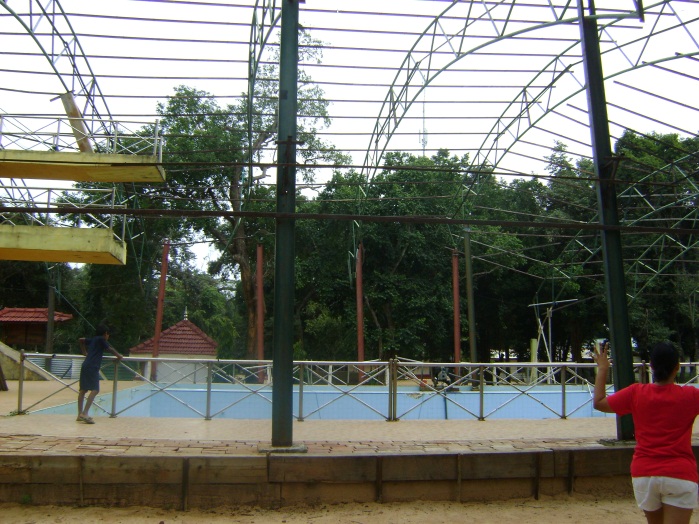
This was PrabakaranƒÆ’‚¢ƒ¢-¡‚¬ƒ¢-¾‚¢s swimming pool deep in the jungles of Mullaitivu where he personally watched sea tigers train
Mullaitivu is a district with an area of 2,516.9 sq.km ƒÆ’‚¢ƒ¢-¡‚¬ƒ¢¢”š¬…” its strategic interest to a sovereign nation is nothing any Government should need to afford excuses for or explain why it would place military installations to secure that security interest.
The 165 families newly housed in the Kepapilavu model village remains in the corner of Kepapilavu bordering Seeniyamottai. There is nothing that hampers any of their daily requirement in terms of school, health facilities or livelihood ƒÆ’‚¢ƒ¢-¡‚¬ƒ¢¢”š¬…” everything is within range. So what is this fuss except to use that as an excuse to create an issue, internationalize it and to demand the security forces to move out of this strategic location! We now know the drill.
The current wave of negative media coverage portraying the ƒÆ’‚¢ƒ¢-¡‚¬ƒ…-woesƒÆ’‚¢ƒ¢-¡‚¬ƒ”š‚ of civilians echoes the same strategy used in attempting to remove the Mullikulam naval camp with an all out international cry led by TNA over the plight of 81 non-Hindu families. The gameplan was clear ƒÆ’‚¢ƒ¢-¡‚¬ƒ¢¢”š¬…” use media to create pressures to remove Sri LankaƒÆ’‚¢ƒ¢-¡‚¬ƒ¢-¾‚¢s security bases from coastal areas and for whose advantage would this be? Your guess is as good as mine!
Having spoken to numerous people who were conversant in Sinhala, there was nothing to remotely convey the feeling of displeasure with the military when the question was directly posed as to how satisfied the people are with the military. In my presence a request for a sewing machine was immediately attended to and that does not show signs of a military ƒÆ’‚¢ƒ¢-¡‚¬ƒ…-intimidatingƒÆ’‚¢ƒ¢-¡‚¬ƒ”š‚ civilian life ƒÆ’‚¢ƒ¢-¡‚¬ƒ¢¢”š¬…” it showed a new bond and how people were not afraid to make a request!
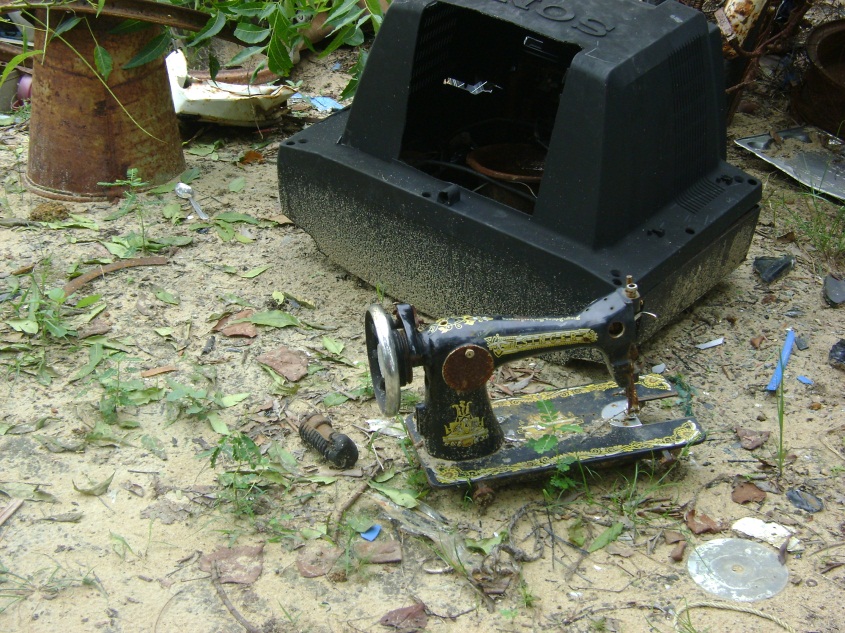
This sewing machine was just one of the items that were found after the fall of the LTTE in 2009/Pudukurippu
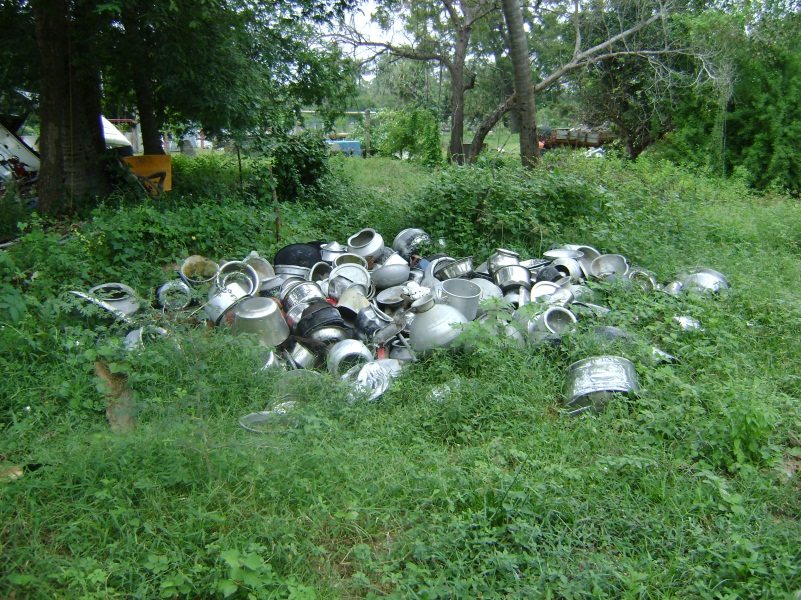
File foto: Utensils of Tamil cilians who were forced from their homes to join LTTE to be used as human shields or hostages in 2009.
Far more than the bonding between the older generation was the manner in which the children were moving with the armed forces. The communication factor has helped to a great extent and with a growing number of military personnel conversing in Tamil it is ideal for the children too to learn Sinhala. This is in deed good news for the future especially when attempts are afoot to draw youth back into an armed struggle by the very forces that created Sri LankaƒÆ’‚¢ƒ¢-¡‚¬ƒ¢-¾‚¢s terror helped by their local stooge the TNA. Thankfully the people of Kepapilavu have realized the lies of the political party and TNA has failed to make inroads into the area or amongst the people of this model village.
Yet, with these calls to remove Sri LankaƒÆ’‚¢ƒ¢-¡‚¬ƒ¢-¾‚¢s military from coastal belts it is time Sri Lankan authorities realize who their enemies are.
If its denial of rights that Elijah is referring to he or she may like to explain what rights the Tamil people had under LTTE rule ƒÆ’‚¢ƒ¢-¡‚¬ƒ¢¢”š¬…” abducting children as young as 10years, denying children their fundamental rights to education, encouraging religious conversions, subjecting Tamil people to passes issued by LTTEƒÆ’‚¢ƒ¢-¡‚¬ƒ¢-¾‚¢s Transport Monitoring Division (TMD), restricting movement of Tamil people, forceful payments to LTTE checkpoints, unpaid labor, using Tamils as human shields, confiscating Tamil assets, assassinating over 250 Tamil learned men ƒÆ’‚¢ƒ¢-¡‚¬ƒ¢¢”š¬…” Can Elijah please explain what ƒÆ’‚¢ƒ¢-¡‚¬ƒ…-dignityƒÆ’‚¢ƒ¢-¡‚¬ƒ”š‚ the LTTE gave the Tamil people to promote the idea that life of these Tamils were far better under LTTE rule!
http://www.hrw.org/sites/default/files/reports/ltte1208webwcover_1.pdf
Keeping to the theme of rights the writer quotes the Constitution of Sri Lanka ƒÆ’‚¢ƒ¢-¡‚¬ƒ…-Any citizen of Sri Lanka has the inalienable right to acquire land in any part of the country, in accordance with its laws and regulations, and reside in any area of his/her choice without any restrictions or limitations imposed in any manner whatsoeverƒÆ’‚¢ƒ¢-¡‚¬ƒ”š‚ ƒÆ’‚¢ƒ¢-¡‚¬ƒ¢¢”š¬…” with Sinhalese the 3rd place in terms of population in Colombo it shows how well Tamils and Muslims have used this ƒÆ’‚¢ƒ¢-¡‚¬ƒ…-inalienableƒÆ’‚¢ƒ¢-¡‚¬ƒ”š‚ right and prompts Sinhalese to use these same rights to purchase property and land in the north and east of Sri Lanka to work and live there. ItƒÆ’‚¢ƒ¢-¡‚¬ƒ¢-¾‚¢s the perfect way to move forward with reconciliation.
As for threats – What threats do Tamils face in the present that are exclusive to them? They are all traveling throughout the country without fear, they visit their relatives without having to pay LTTE at checkpoints or handover their jewelery, they purchase property and land without fear and the only issue that has resurfaced which the LTTE kept in check was the Tamil caste issue. With the caste factor resurfacing we again see a host of conflicts all associated with the caste factor and it is nothing that the Sinhalese, the military or the Government can be blamed for. It is something the Tamil people need to sort out amongst themselves.
The Government may be at fault for a lot of things but its manner of resettling and developing the North and the East is nothing that deserves humiliation and fabrications. Visiting these areas once the haunts of the LTTE it is not hard to feel angered with the LTTE for letting their own people down for 30 odd years on the pretext of being their savior. People need to visit these areas to see for themselves how LTTE had fooled the Tamil people and the lies that the LTTE supporters contributed towards as well.
The Village of Keppapilavu
The following account is given about this village in the place-names
website: dh-web.org/place.names/index.html
Kepapilavu, Keppapilavu (Mooladoova [Mullaitivu])
KEPPALUVA, ƒÆ’‚ ƒ”š‚¶ƒ…‚¡ƒÆ’‚ ƒ”š‚·ƒ¢-¾‚¢ƒÆ’‚ ƒ”š‚¶ƒ”š‚´ƒÆ’‚ ƒ”š‚·ƒ…‚ ƒÆ’‚ ƒ”š‚¶ƒ”š‚´ƒÆ’‚ ƒ”š‚¶ƒ”š‚½ƒÆ’‚ ƒ”š‚·ƒ¢¢”š¬‚ƒÆ’‚ ƒ”š‚·ƒ¢-¡‚¬
This was originally a low-caste subdivision (panguva, or paluva in Sinhala, and piluva in Tamil) inhabited by a Telegu-speaking `depressed’ caste (Keppu caste) who worked in ships that came to the Mooladoova inlet during medieval times. Mooladoova was probably an important eastern port and storage location of goods even during the Anuradhapura period. The Telegu speakers probably migrated here much later, but perhaps as early as the Magha invasions.
During the Eelam wars this area was used by the Tigers for military purposes. Today it is a part of the naval security establishment and contains a high-security zone (HSZ). Although this area had not been occupied for decades except by the Tigers, some IDPs have been `set up’ (since 2011) by political advocacy groups to claim settlement exactly in these areas, as a means of targeting the HSZ. However, the government has offered alternative settlement in Seeniyamottai, near Nandakadola (Nadikadal).
(Much of the high-quality farming land is owned by `high-caste’ owners who are absentee landlords. They advocate the policy of re-settling theƒÆ’-¡ƒ”š‚ villagers in their old home-steads, so that the old caste structures of tradional Hindu villages are recreated. This is advantageous to the high-caste Tamil groups who wish to perpetuate their domnance over the low-caste groups who are for ever limited to their poor homesteads, and have to work in the fields of the high-caste landowners. Thus, the resolution of the `Tamil question’ in the North is linked closely with land reform.)
Similar problems have been noted in resettling IDPs in ‘Kok
Kokachchankulam. See below:
Kokkachchaankulam (Vannimava [ Vavuniya])
KOK-ATHTHANA KULAMA, Kokaththanakulama, Kokattanakulama
Kokuathtnana is a a type of Aththana (Datura) with spiky fruits (thorny), as implied by its Sinhala adjective “Koku”. The Tamil place-name or word-grouping “Kokkachchan” has no clear meaning. The Tamil name for Aththana is Oomathai or Mattai” and hence does not connect with the place name. Note that Aththana is a hallucinogenic plant with many variant forms (kalu-attana, suduattana etc). (See also under Achchankulam where we discuss “achchan”.). Hence the Tamil form is most likely an adaptation from the Sinhala.
The Eelam wars led to much upheaval in this area which became predominantly Tamil since the late 19th century (cf. J. P. Lewis). It was formed by a mosaic of caste-based hamlets. Resettling these villages mainly with the original occupants, or their kith and kin, without suitable social engineering poses the danger of recreating the old caste enclaves, not only in this village, but in similar war-ravaged villages
The possibility that the original name was “Ruk-aththana-kulam”, i.e., named after Alastonia scholaris, ie., Alstonia scholaris (L.)., known as “Elilaipalai” in Tamil, cannot be excluded.
History
Second century Buddhist ruins and stone pillars have been recorded in this area (Archeological annual reports, 1982 and before). ƒÆ’‚ ƒ”š‚¶ƒ…‚¡ƒÆ’‚ ƒ”š‚·ƒ…-ƒÆ’‚ ƒ”š‚¶ƒ…‚¡ƒÆ’‚ ƒ”š‚·ƒ…‚ ƒÆ’‚ ƒ”š‚¶ƒ¢¢”š¬‚¦ƒÆ’‚ ƒ”š‚¶ƒ”š‚ƒÆ’‚ ƒ”š‚·ƒ…‚ ƒÆ’‚ ƒ”š‚¶ƒ”š‚ƒÆ’‚ ƒ”š‚¶ƒ”š‚± ƒÆ’‚ ƒ”š‚¶ƒ…‚¡ƒÆ’‚ ƒ”š‚·ƒ¢¢”š¬‚ƒÆ’‚ ƒ”š‚¶ƒ”š‚½ƒÆ’‚ ƒ”š‚¶ƒ”š‚¸
In search of justice: The story of the people of Kepapilavu
ƒÆ’-¡ƒ”š‚ By Elijah
The life and times of the people of Kepapilavu should make for a study in endless suffering. After witnessing the war at its cruellest, experiencing multiple displacements and spending the longest interval of time confined in Menik Farm, one would expect that life can hardly get any worse. Yet, their present situation is darker than their past, and the future is a landscape of uncertainty.
In search of justice: The story of the people of Kepapilavu
The story of the people of Kepapilavu reminds all of us that the ethnic conflict is far from over. Their reality contradicts the regimeƒÆ’‚¢ƒ¢-¡‚¬ƒ¢-¾‚¢s claims of rapid post-war development and the rhetoric of peace.
So much for rights
ƒÆ’‚¢ƒ¢-¡‚¬ƒ…-Any citizen of Sri Lanka has the inalienable right to acquire land in any part of the country, in accordance with its laws and regulations, and reside in any area of his/her choice without any restrictions or limitations imposed in any manner whatsoeverƒÆ’‚¢ƒ¢-¡‚¬ƒ”š‚ ƒÆ’‚¢ƒ¢-¡‚¬ƒ¢¢”š¬‚ The Lessons Learnt and Reconciliation Commission Report ( 6.104).
The Headquarters of the 59th Division, in Kepapilavu, Mullaitivu spans over a thousand acres. Much of the residential land and some of the agricultural land are believed to be legally owned by private individuals who hold legal documentation. This military base is the root cause of all the problems the people of Kepapilavu are facing. The Government Agent of Mullaitivu and several military officials, who visited the Kepapilavu families in Menik Farm a few days before the closure of the internment facility, promised the people that they would be resettled in the lands of origin within two months.ƒÆ’‚¯ƒ”š‚¿ƒ”š‚½ ItƒÆ’‚¢ƒ¢-¡‚¬ƒ¢-¾‚¢s been three months and the promised resettlement is yet to happen: the people are still living in Seeniyamottai, a barren area close to Nandikkadal. They were forced to take refuge here as a temporary measure after leaving Menik Farm.
Massive buildings in the Kepapilavu HQ and the armyƒÆ’‚¢ƒ¢-¡‚¬ƒ¢-¾‚¢s general behaviour suggest that the promised closure of this facility will not happen anytime soon. The allocated compensatory plots, in Seeniyamottai, are infertile and smaller in size than the lands in Kepapilavu. The army is coercing the people into accepting Seeniyamottai as the alternative. In a bid to seal the dispossession, the army is building permanent houses for the families; in contrast humanitarian agencies refused to construct any permanent structures, fearing that it would compromise the peopleƒÆ’‚¢ƒ¢-¡‚¬ƒ¢-¾‚¢s rights and wishes. When six women braved their circumstances and made preparations to file fundamental rights petitions to acquire their lands back, they were called into the GN office and threatened by high ranking army officials. They were apparently told that their pursuit of justice would ƒÆ’‚¢ƒ¢-¡‚¬ƒ”¹…”result in losing what little they have.ƒÆ’‚¢ƒ¢-¡‚¬ƒ¢-¾‚¢
The normal and the abnormal
Fear and intimidation caused by the militaryƒÆ’‚¢ƒ¢-¡‚¬ƒ¢-¾‚¢s presence is plainly visible. The level of military involvement in civilian life in the Seeniyamottai camp is a grim reminder of Menik Farm days. The uniformity in the peopleƒÆ’‚¢ƒ¢-¡‚¬ƒ¢-¾‚¢s answers to certain questions demonstrates that they are under strict orders.
For ordinary people, survival is the priority. Enforcing helplessness is the simple strategy employed by the Government in its attempts to normalise the present. The goons, the conventional army, and the military intelligence department operate on many different levels in the mission to silence the peopleƒÆ’‚¢ƒ¢-¡‚¬ƒ¢-¾‚¢s voice. The goons go around throwing petrol bombs, pouring foul oil on protestors and collecting information for the higher powers; the conventional army is the pacifying force, and does the propaganda work as well; the intelligence department is responsible for promptly removing anyone who shows the slightest glimpse of political awareness. While this is the general trend in the North and the East, in the Vanni it is worse. The day when the abnormal becomes the normal is not far away. As for the people in Kepapilavu, it has already happened.
Unwillingness to learn from the past
The mistreatment of Kepapilavu families highlights that Sri Lanka is yet to repent for its original sin: the failure to treat the minority communities as equal citizens. Living in oneƒÆ’‚¢ƒ¢-¡‚¬ƒ¢-¾‚¢s land of origin is a fundamental right. The denial of this right was a major factor that gave rise to the countryƒÆ’‚¢ƒ¢-¡‚¬ƒ¢-¾‚¢s ethnic conflict. It is depressing to see the mistake so wilfully repeated in the lives of the people of Kepapilavu. Indeed, what we are witnessing now is nothing new. Sri Lanka has already seen the consequences of arrogant denial of rights.
Today, in Sri Lanka, more than ever, the place of the minoritiesƒÆ’‚¢ƒ¢-¡‚¬ƒ¢-¾‚¢ is increasingly under threat. The self-proclaimed patriots who concern themselves with the fight against separation remain consciously ignorant of the causes that gave rise to the Tamil struggle. Tamil political leaders have failed to envision a new strategy: they seem stuck with the international community ƒÆ’‚¢ƒ¢-¡‚¬ƒ¢¢”š¬…” a force that has failed the Tamils and will happily do so again. Moderates, of course, are silently watching the inferno burn down the country. Will Sri Lanka ever learn?
Natural justice, the Chief Justice and the people of Kepapilavu
Ironically, the people in Kepapilavu are the very people the state proudly claims to have liberated from the LTTE. Recently, the government drafted an Action Plan to implement the LLRC recommendations. And it has also promised a new dawn in Sri LankaƒÆ’‚¢ƒ¢-¡‚¬ƒ¢-¾‚¢s human rights history. Three-and-a-half-years after the end of war, there is nothing new in the lives of the people in Kepapilavu.
ƒÆ’‚¢ƒ¢-¡‚¬ƒ”¹…”I just want to live and die in the land of my origin,ƒÆ’‚¢ƒ¢-¡‚¬ƒ¢-¾‚¢ a middle-aged mother summed up the entire communityƒÆ’‚¢ƒ¢-¡‚¬ƒ¢-¾‚¢s plight. The demand to return to their lands goes beyond economic reasons, and has nothing to do with any ethno-political ideology. There is no justification for setting up a swarm of military bases and stealing private lands in the process. This land grab by the military is illegal, and must be treated as such. The Army HQ must be closed down, or relocated, and people must be allowed to settle in the original habitat.
Natural justice does not discriminate between the powerful and the powerless, or between ethnicities. The Chief Justice and the people of Kepapilavu, in the eyes of justice, are the same. Those who want the PSCƒÆ’‚¢ƒ¢-¡‚¬ƒ¢-¾‚¢s verdict on the impeachment motion annulled on the grounds of natural justice, in the same spirit, should be willing to defend the basic right of the people of Kepapilavu. After all, the government gave the CJ a trial: the people of Kepapilavu cannot even file a petition.
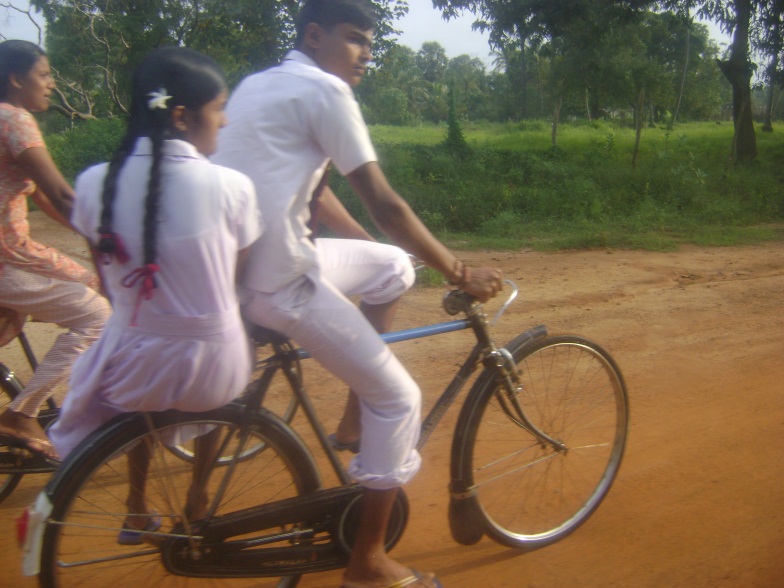
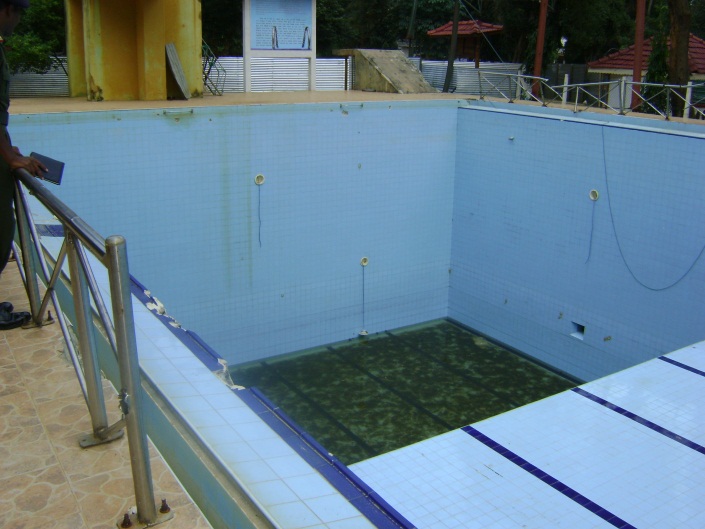
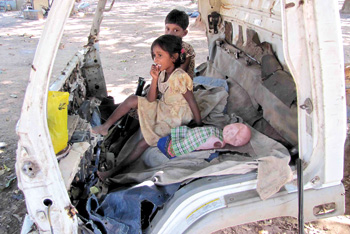
January 9th, 2013 at 7:06 am
Thank you Shenalli for this article. This Elijah must be one of these NGOs, who wants to settle down in the area to put the people against the Government.
The west should understand the reality of what Sri Lanka is after terrorism and that the people are certainly better off than they were under the iron foot of terrorism.
January 9th, 2013 at 7:28 am
The Government may be at fault for a lot of things but its manner of resettling and developing the North and the East is nothing that deserves humiliation and fabrications?
for perfect way to move forward with reconciliation- Govt should puplish list of fault they ve done !!!
The communication factor has helped to a great extent and with a growing number of military personnel conversing in Tamil it is ideal for the children too to learn Sinhala ! it bring best long term solution to unit mother lanka for ever !!!
First batch of 1,400 army persnals completed Tamil language test – Well done
I hope similar traning will give to Tamils to complete Sinhala Language !!! (If TNA against this program just put them into 6 month jail with 3 Jaffana uni students)
no short cut !!! Unit in diversity !!!